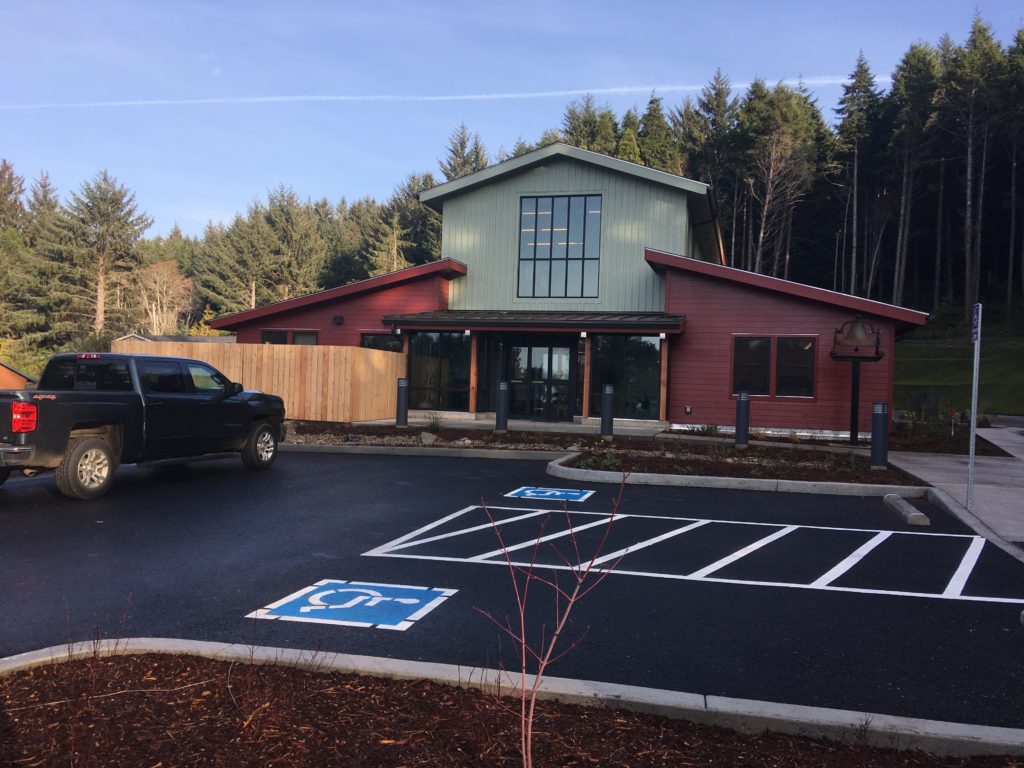
By QUINTON SMITH/YachatsNews.com
When the finishing touches are completed, the last equipment purchased and the final landscaping done, the Yachats Rural Fire Protection District estimates it will have $562,000 left over after building its main fire station.
Now the district’s board has to figure out how to give the money back to taxpayers.
The district moved into its new station along U.S. Highway 101 just north of Yachats in November. There’s still about $150,000 in work to complete, equipment to purchase and some bills to pay, district administrative assistant Shelby Knife told the fire board Monday.
But when it’s all done Knife estimates the district should have $562,000 remaining from $8.83 million it had to build the station. The total includes the $7.7 million bond approved by voters in 2016, a $1.05 million premium on the bond sale, and $279,000 in interest earned since then.
The leftover money can’t be used to lower yearly operating costs, but only to build and equip the new station. So the best – and right – thing to do is determine how to give it back to taxpayers, said board member Ed Hallahan, who led the campaign to build the new station.
“There’s no way to write a check to everyone,” Hallahan told the board during a special meeting Monday. “We can pay the money back over a few years … but what is a good way to do that so people can see that they’re getting something back but not getting a big hit again in 2-3-4 years?”

The bond can be levied for up to 31 years. For the 2019-20 fiscal year the district has levied $402,500, according to the Lincoln County Assessor’s Office. In 2016 the board estimated the bond would cost district taxpayers about $68 cents per $1,000 assessed property value, or about $170 a year on property assessed at $250,000.
That there is money left over is a compliment to the district, which initially struggled to contain costs of the building after it broke ground in 2017. Before the first wall went up it ran into nearly $1 million in unexpected costs because of soil and foundation issues and having to move a creek on the six-acre property. The district, its architect and contractor then began paring back elements of the design, materials and furnishings until it got costs within budget.
Now it has money to return.
The simplest way, Hallahan suggested, is to simple not levy the full, authorized amount for several years – enough so taxpayers notice but not so much that there’s sticker shock again once all the $562,000 is returned.
Board members agreed to think about the best way to return the money, have Knife run some numbers and discuss again at upcoming meetings.
“Let’s kick this around and keep discussing it,” Hallahan said. “You don’t want to surprise people either way.”
In other business Monday the board:
- Asked district administrator Frankie Petrick to keep working with some neighbors to the north on Ocean Wayside Lane who are objecting to night-time lights from the station or its flag poles. The neighbors are adjusting to having the station, which is manned 24/7 and replaced trees that once stood on the property, protecting shielding from lights and noise. The district has already adjusted driveway lights and put interior lights on motion detectors. But neighbors are still complaining about small spotlights on three tall, exterior flagpoles and light from the second-floor mezzanine when staff moves around at night.
- Discussed how much – and what time period it may cover – a cost of living increase it should give to firefighters, paramedics and emergency medical technicians. The raise is complicated by firefighters voting to unionize in August 2018 and not getting a raise while negotiations stretched out for 18 months. Firefighters voted in December to drop the union. Now the board has to figure out how much of a raise employees should get and how far back it should go.
- Was told that a $77,000 mobile generator purchased by the state Department of Emergency Management has arrived and will be hooked up soon to power the station in event of a prolonged outage. The fire district gets to house and use the 120-kilowatt generator but the state can requisition it in case of a larger, regional emergency.
- Was told that no one applied by the early January deadline to replace board member A’lyce Ruberg, who was elected in May but resigned in November after allegations she lied in her Lincoln County voters pamphlet information. The four remaining board members said they will continue to seek applicants. Chair Katherine Guenther said the board might have to change its twice-a-month daytime meeting schedule in order to attract candidates.


